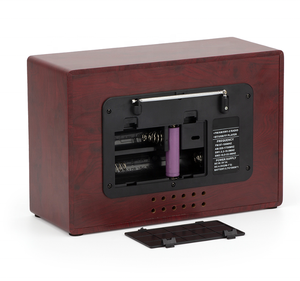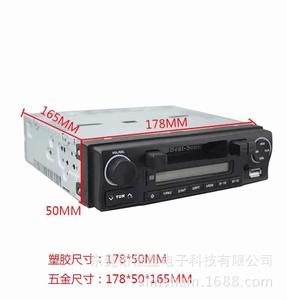
All categories
Featured selections
Trade Assurance
Buyer Central
Help Center
Get the app
Become a supplier

(2583 products available)










































Portable cassette players
Portable cassette players are small and lightweight, allowing users to carry them anywhere. These players often have built-in batteries that are rechargeable or replaceable, making them ideal for on-the-go or outdoor activities.
Bluetooth cassette players
Bluetooth cassette players allow users to connect their devices wirelessly. Users can stream music from their smartphones or tablets through the player. This feature eliminates the need for physical cables, providing convenience for music lovers.
Car cassette players
Car cassette players enable the playback of cassette tapes and are designed for use in vehicles. They allow users to enjoy their favorite cassette collections while driving. Some retro cassette MP3 players also include adapters that let users connect portable CD players or other audio sources to the car's cassette player.
Boomboxes
Boomboxes are large, portable, and cassette players with built-in speakers and radios. They are designed for outdoor and open-air music playback. Some retro cassette MP3 players can read cassette tapes and include CD players and other audio sources, such as Bluetooth or auxiliary inputs, allowing users to play various music formats.
Handheld players
Handheld players are smaller and lighter, making them comfortable to hold and carry. They often have simple controls and displays for easy operation. Some handheld players also include additional features, such as FM radios and voice recording capabilities, adding versatility to music playback.
Bluetooth cassette adapters
Bluetooth cassette adapters are designed to be inserted into a car's or portable cassette player’s cassette deck. They allow users to connect their smartphones or other Bluetooth-enabled devices wirelessly to stream music through the car's or portable cassette player's audio system, enhancing the retro experience with modern technology.
The specifications of cassette players differ depending on the model, brand, and features. Here are some standard specifications:
Audio Formats
Some formats that can be played on retro cassette players are MP3, WMA, AAC, and FLAC. These players decode the compressed audio files to deliver quality sound.
Bit Rate
Bit rate is the amount of data used in an audio file per second. It influences the quality of sound produced. For retro cassette players, the bit rate is usually between 128 and 320 kbps. This range allows for a good balance between audio quality and file size.
Sample Rate
The sample rate is the frequency at which an audio signal is sampled during recording or playback. For a retro cassette MP3 player, the sample rate is usually 44.1 kHz. This rate permits the accurate reproduction of audio signals.
EQ Settings
The EQ settings on a retro cassette MP3 player allow users to customize sound according to their preferences or the genre of music. The settings may include options like rock, pop, jazz, or classical.
Power Supply
The power supply of a retro cassette MP3 player can be via USB or batteries. The USB connection offers a convenient way of powering the device and charging its batteries. The batteries offer portability and convenience since they allow the player to be used anywhere.
When it comes to maintaining a retro cassette MP3 player, here are some things to keep in mind:
Choosing the right retro cassette player can be a daunting task, especially with the different brands and features. Here are some things one needs to consider before purchasing a cassette player.
The steps to DIY and replace a retro car cassette player are as follows.
Q1: How long do retro cassette players last?
A1: The longevity of a retro cassette player depends on several factors, including usage, maintenance, and build quality. Generally, well-maintained players can last for several years, but portable ones may only last a short while.
Q2: Do retro cassette players have Bluetooth connectivity?
A2: Some retro cassette players have Bluetooth connectivity, allowing users to connect their smartphones or other Bluetooth-enabled devices wirelessly. However, not all players have this feature, so checking the specifications is important.
Q3: Can users play their old cassettes on new cassette players?
A3: Users can play their old cassettes on new cassette players as long as the modern player is designed to handle standard cassette tapes. Most new retro portable cassette players are compatible with regular c90 and c100 cassettes.
Q4: Is the sound quality of retro cassette players good?
A4: Sound quality can vary depending on the cassette player and the condition of the cassette tape. Higher-quality players provide better sound quality, but it may not match the clarity of modern digital formats.
Q5: Can users record on retro cassette players?
A5: Some retro cassette players have recording functionalities, allowing users to record audio from the radio or other external sources. Players with this feature usually have a record button and a microphone.